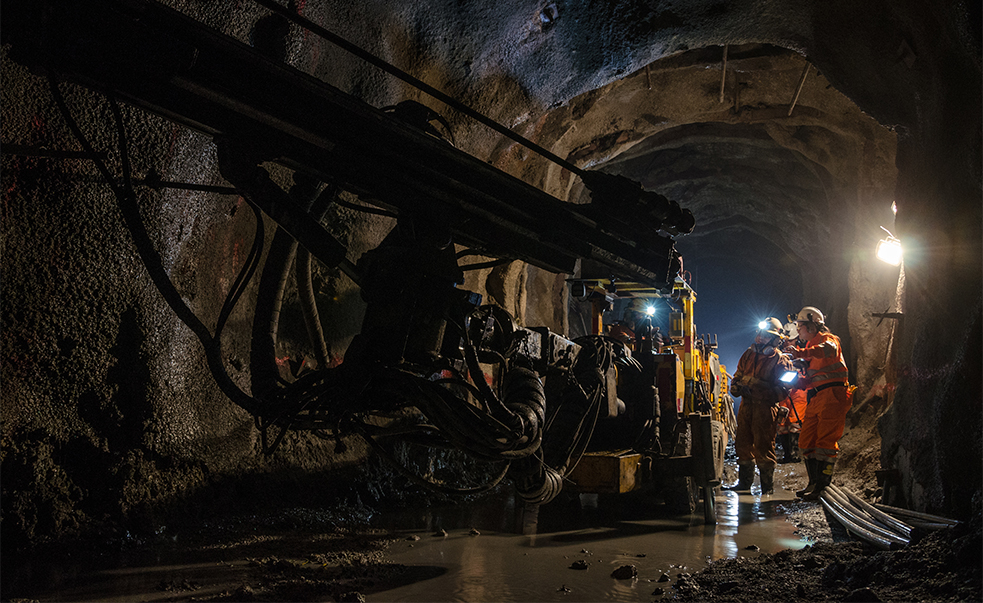Underground mines and tunnels are some of the most challenging environments in which to deploy network systems. Connectivity and throughput demands are high, but circular ramps and declines, stopes, and mine layout can all place limitations on how far wireless signals can travel. Many mines, therefore, depend on fiber to achieve reliable underground communications, but installing fiber in active drives, panels and declines is difficult to schedule and can create operational and maintenance nightmares. In addition, development, drill and blast areas can rarely support any fiber infrastructure. It is not uncommon for trucks to accidentally catch and rip down sections of fiber and when that happens connectivity across the entire underground mine can be lost.
Rajant provides a robust alternative to fiber and traditional single radio wireless systems using our multi-radio, multi-frequency BreadCrumb® nodes combined with the Poynting wide-band, bi-directional, circular polarized antenna system. BreadCrumbs maintain multiple simultaneous connections between peers for inherent redundancy and can simultaneously send and receive information on different frequencies, mitigating issues due to interference, congestion, and equipment outages. This also increases transceiver capacity to ensure low latency and enables mines to cascade BreadCrumbs together as many as 10 hops or more without throughput degradation. Poynting antennas provide bi-directional coverage with dual-frequency Wi-Fi connections to assist in propagating signals around tunnel bends and to and from moving machinery.
Together they create a complete underground and tunnel-wide wireless network for mission-critical data, video, and voice communications. The system can also be used to supplement existing fiber and cable “hot spot” networks, provided via vertical shaft access levels, portals and tunnels.
With the Rajant-Poynting solution, underground mines can enhance network capacity and mobility to run advanced applications that power greater safety, efficiency, and autonomy—all without the use of expensive fiber. Part of this performance comes from Rajant’s patented InstaMesh® networking software, which is loaded onto every BreadCrumb node. InstaMesh enables the network to dynamically and automatically adapt to quickly- or constantly-moving network elements, providing reliable network-wide mobility.
The protocol directs traffic via the fastest path over the multi-hop network, switching radios at each hop for minimal latency over long distances to enable and support applications, including…
Click here to continue reading. 🖉












